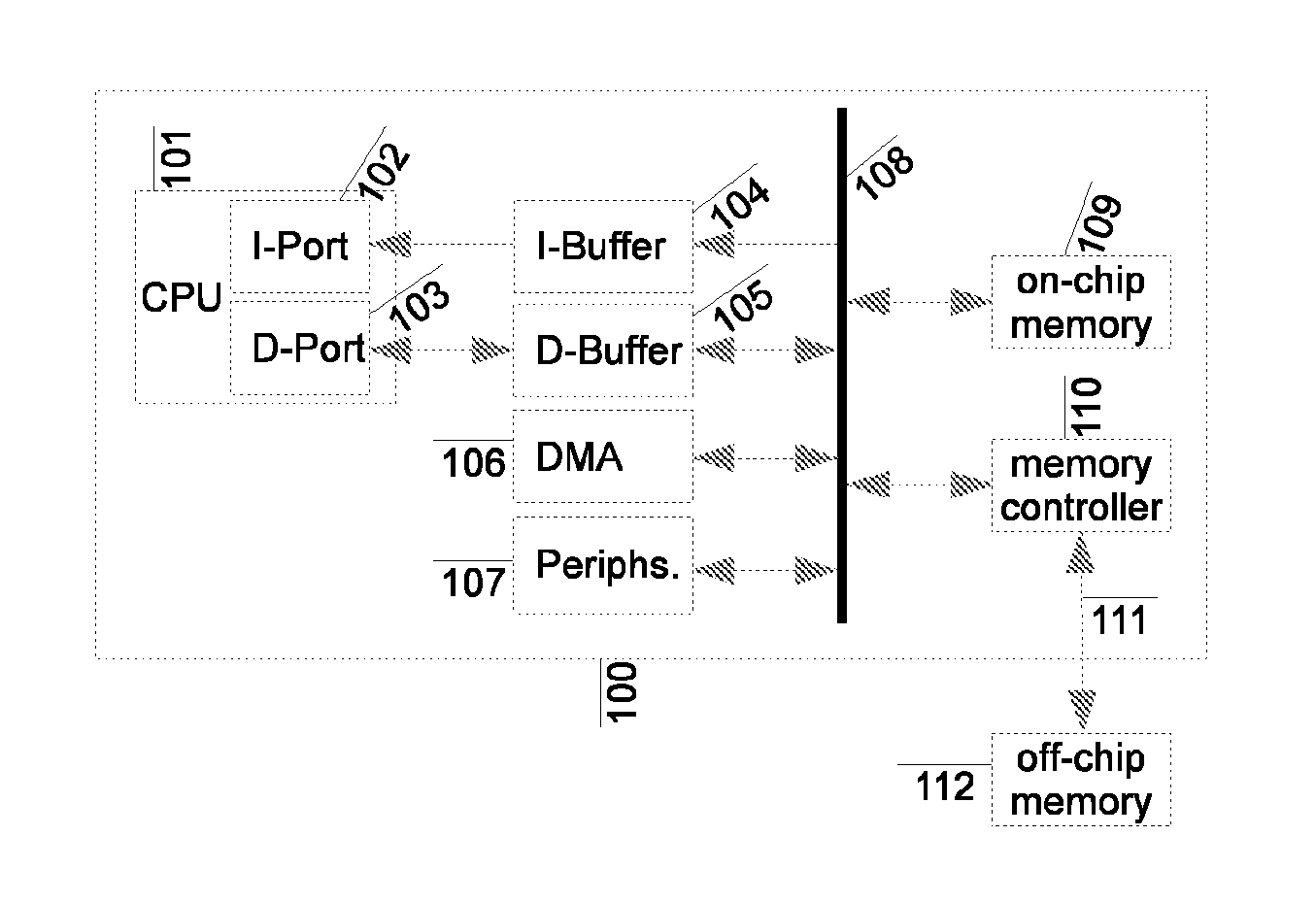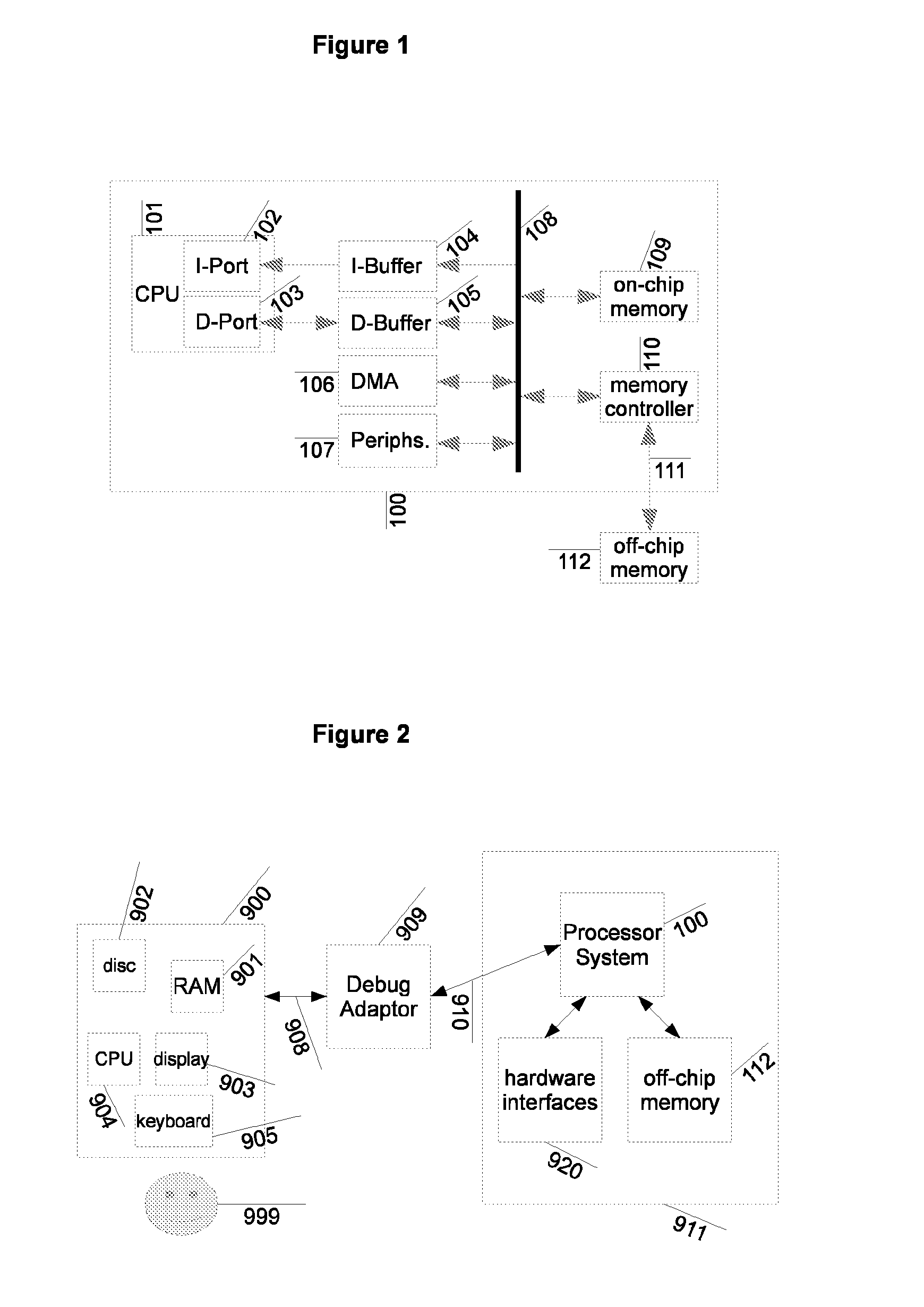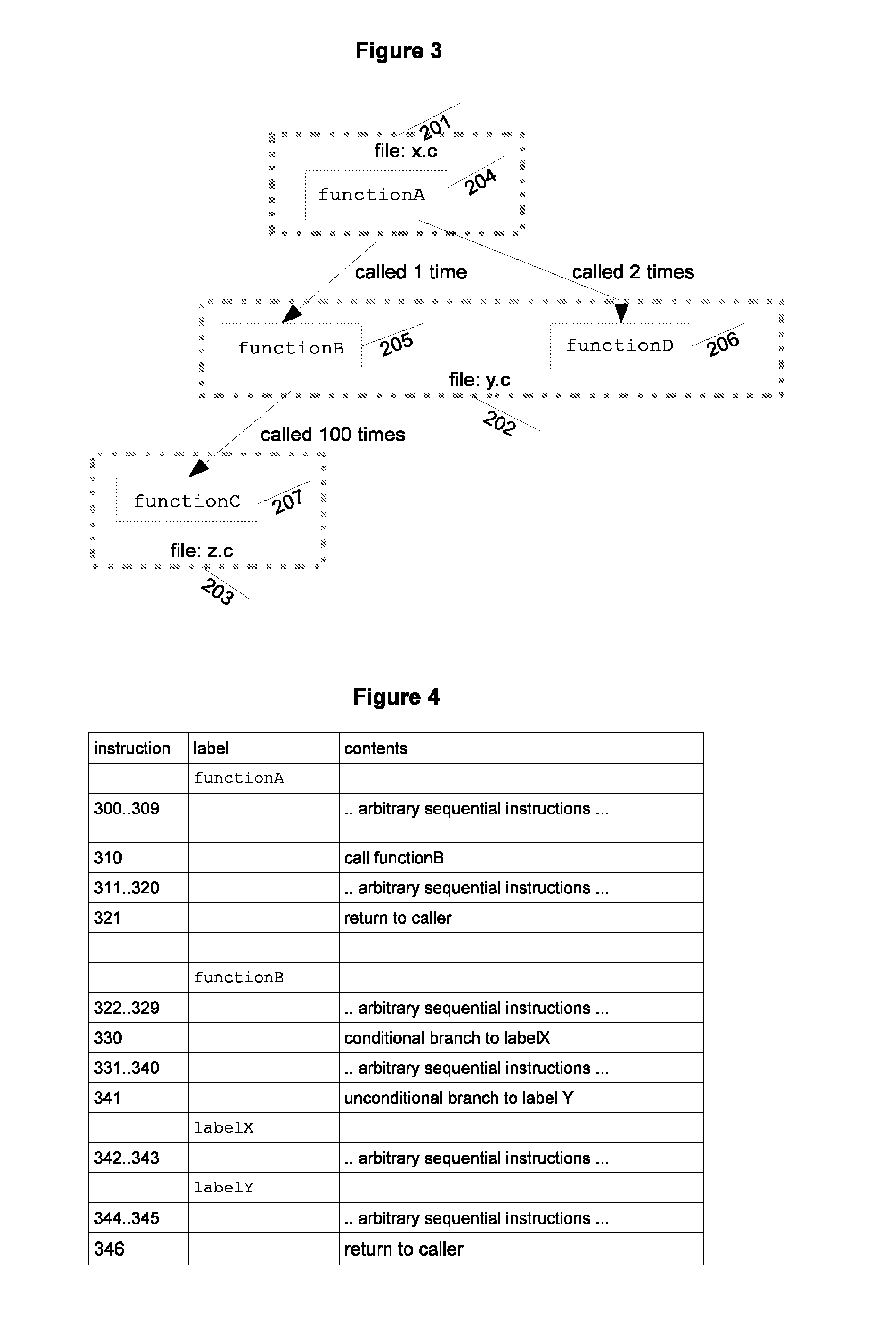Traditional
compiler technologies which process each source file one at a time (e.g. the GNU GCC
compiler) are unable to perform many of these optimizations between functions whose body is not available at the point of compiling the caller function.
Real-time behaviour is an important characteristic in
embedded system designs and is not well addressed by existing program generation techniques.
The time and energy taken to fetch these instructions from the I-Buffer will be unpredictable.
This can result in unnecessary instruction fetches from other addresses into the I-Buffer 104,
wasting time, energy and polluting its contents with instructions which are not required.
This further increases design complexity, and
energy consumption of the system over what might actually be required.
Existing techniques also ignore the effects that
code generation has on the target
machine, attempting to generate optimal BCET for a given function may disturb the I-Buffer / D-Buffer state sufficiently that whole program's BCET is inferior.
This approach has many problems.
Firstly, profiler tools 812 are often unavailable, or are unsuitable for use on embedded processor systems, as they consume large amounts of memory in the target system, and alter the real-time behaviour such that the program may fail to execute correctly (these problems are known as temporal bugs).
Secondly, this method requires a representative set of inputs to stimulate “typical” behaviour during the “training run”.
The relationship between which and why is complex, and is frequently beyond the capabilities of even the most skilled programmers, and of existing software tools.
For example, a function's execution may reveal in a large number of cache misses, but this could be because a previous function has disrupted the cache rather than the function itself not being cache-optimal.
Correspondingly, programmers and existing optimization techniques move bottlenecks from one area to another in a complex and uncontrollable manner and are analogous to “
balloon squeezing” (attempting to make a
balloon smaller by squeezing it doesn't work—it just forces air from one part to another and squeezing too much may result in it
bursting!).
This wastes
programmer's time, and can result in late, inefficient and even bug-ridden designs.
Thirdly, the information generated is specific to a particular set of dynamic behaviours observed which may not exhibit typical behaviour (either due to the presence of the profiler altering its behaviour or due to the stimulus applied to the program).
However, all these require dynamic feedback, and still only consider BCET behaviour.
As they operate prior to target
code generation and ignore target-specific effects they yield poor results and are also unable to cope with Real-Time
Operating System (RTOS) related branches and context switches because they only consider traditional
branch instructions.
As alignment and cache sets aren't considered, rearranging fields for simple spatial locality may actually damage D-Miss.
However, this approach is often impractical—developer productivity is already low and adding more manual modifications can only make it worse.
Furthermore, data structures used in
source code files 601, 604 and previously built library files 608 could become incompatible unless everything is re-compiled.
Thus the application of such manually applied techniques is inherently time-consuming and risky.
Relative placement of global data can
impact D-Miss ratio, and the cost of D-Miss operations (for example, performing a cache writeback of a D-Buffer stride where only part of the stride has changed is a worthless but necessary operation).
However, many global data items are written infrequently compared to others, and a placement where DATA (frequentlyWritten) and DATA (infrequentlyWritten) have strong spatial locality can perform unnecessary writebacks, damaging D-
Hit ratio, and increasing the latency of D-Miss operations.
Seminal whole
program compilation technologies (such as those described in EP 0464525, EP 0428084) have significant compatibility and
scalability issues and have failed to become mainstream.
This approach has a number of issues.
Tools are immature, operate slowly and consume large amounts of processor cycles, memory and
disc space when building the program, limiting the opportunities for practical usage.
Exposing the whole-program to the compiler optimizer and can also provide catastrophic program size and performance regressions due to overzealous optimizations and the compiler's inaccurate target cost models (resulting in programs which are actually larger and slower than programs which are compiled a source file at a time in the conventional manner).
Research into post-executable optimizers has attempted to find a practical alternative to whole-
program compilation, though have failed to provide acceptable solutions.
Tools such as AiPop (http: / / www.absint.com / aipop / index.htm), EP 1497722, US 2005 / 0235268) input and output
assembly language source files, and do not fit into a conventional code generation flow of compiler, assembler,
linker, especially when externally supplied library files are required.
Generating two executables (the first, and the optimized second) slows the build process and negatively impacts developer productivity.
Run-time feedback from profiling tools is also required—often this is unavailable, or may be incorrect.
Furthermore, post-executable optimizers often fail to recover sufficient information from the
source code (such as the C language's volatile keyword) and thus can generate incorrectly optimized executables yielding bogus
semantics compared to the first executable.
Features such as dynamic linking (whereby parts of the program's libraries files are bound to the executable at the point at which the
operating system loads and starts to execute it) are often unsupported, even though such facilities are mandatory for many environments.
 Login to View More
Login to View More  Login to View More
Login to View More 


